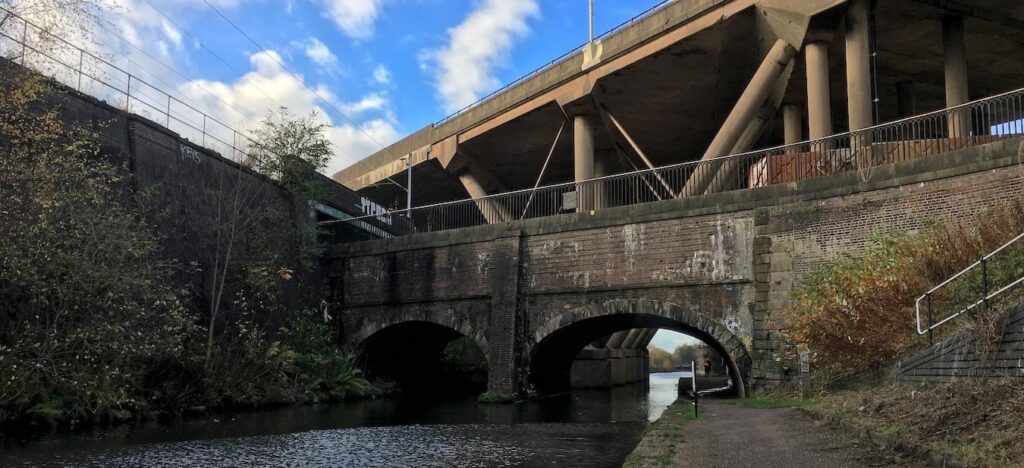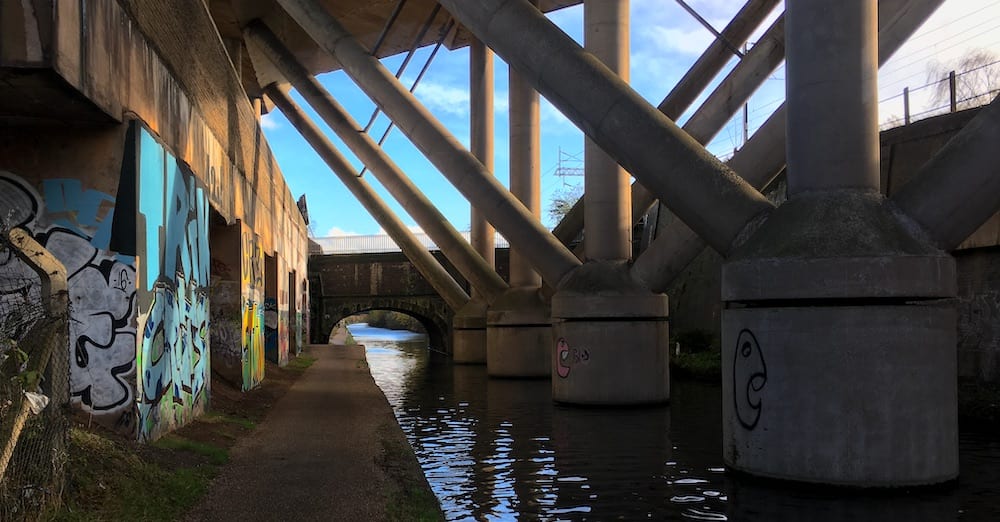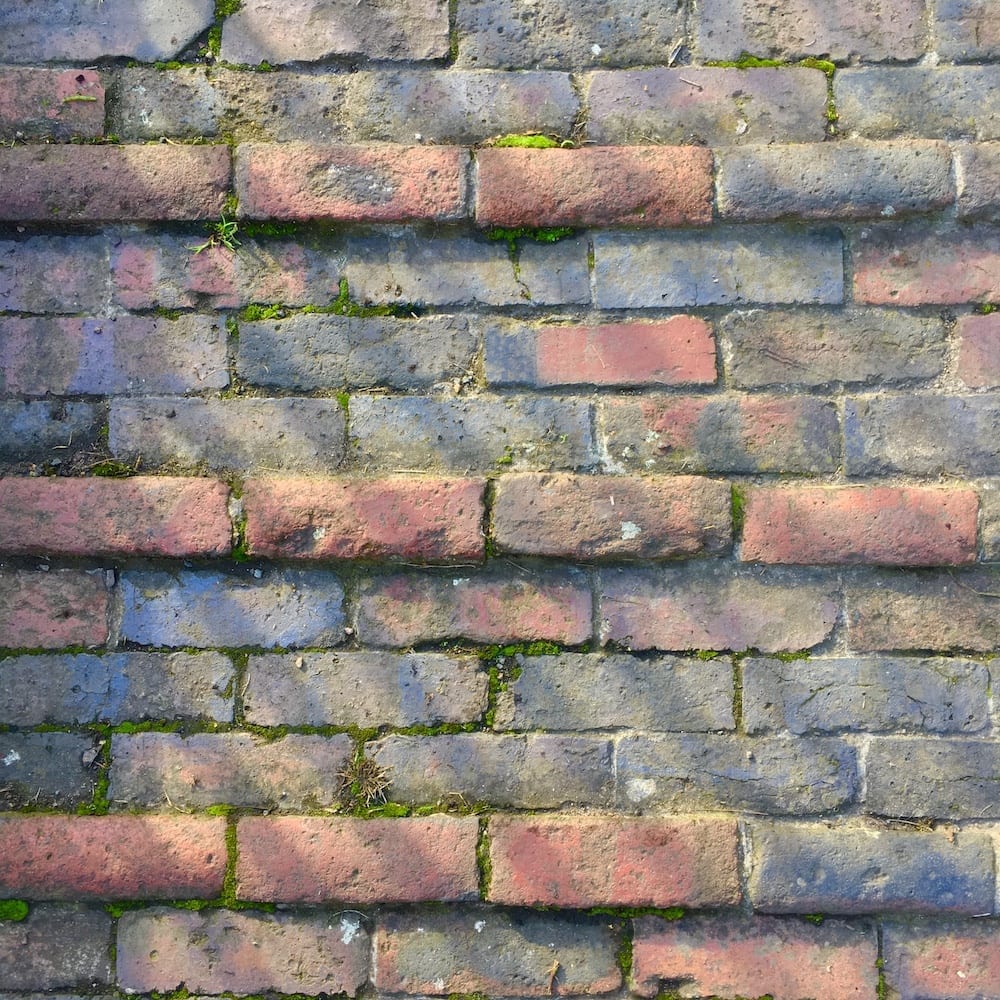Steward Aqueduct
The Steward Aqueduct, also known as the Stewart Aqueduct, was constructed by Thomas Telford to convey the original Birmingham Canal Navigations (BCN) Main Line over his new and improved canal. It is a brick structure that is uniquely situated by a railway and motorway showcasing three centuries of transport evolution.


Tour guide available
The Steward Aqueduct is a key point of interest on our guided walk through the Galton Valley.
Key info
| Location | Smethwick |
| County | West Midlands |
| Completed | 1829 |
| Engineer | Thomas Telford |
| Maintained by | Canal & River Trust |
| Heritage category | Listed Building Grade II |
Visiting guide
Open 24 / 7
Free entry
Free street parking
What can I expect when visiting Steward Aqueduct?
The aqueduct is best enjoyed as part of the Galton Valley Trail. A superb view of the aqueduct can be seen from the east. This view is very unique in that it gives you three centuries of transport in one viewpoint.

The view from the west shows the scale of the Oldbury Viaduct above and its columns that are sunk into the middle of the new BCN Main Line canal.

Walk up the path next to the aqueduct to the top where you can cross and enjoy the detail of the brick towpath and iron railings.


How long does it take to see Steward Aqueduct?
Seeing the aqueduct will take 10 minutes depending on how many directions you would like to view it from.
Is Steward Aqueduct suitable for a picnic?
There is no spot to picnic at the aqueduct; however, there are adequate spots further along the Galton Valley Trail.
How do I get to Steward Aqueduct?
If you are coming by train, get off at Sandwell & Dudley station and walk round an unnamed road on the right to a roundabout at the end. Here you will see some steps down to the canal. Keep walking east, cross over the roving bridge and carry on till you reach the aqueduct.
If you are coming by car, park on Crystal Drive, walk up to Spon Lane, turn left and continue to the bridge over the old main line canal. Walk down to the towpath and follow it round to the aqueduct. The map below will help you visualise how to access the aqueduct. If you are planning to visit the aqueduct as part of the Galton Valley Trail, visit the trail page to find out the best options for transport.
History of Steward Aqueduct
1772 – The aqueduct carries the original Birmingham Canal Navigations (BCN) Main Line from Birmingham to Wolverhampton, which was completed by James Brindley in this year.
1824-29 – The BCN hired Thomas Telford to make significant improvements to the line. This involved the construction of a new, wider and straight canal that bypassed a lot of time-consuming sections on Brindley’s original line.
When Telford’s new canal reached this intersection with the original line, he constructed the Steward Aqueduct to carry Brindley’s canal over. It’s interesting to note the aqueduct is made out of brick rather than iron. Telford was prominently using iron at the time, for example, the nearby Galton Bridge, which was completed in the same year as the aqueduct, is a marvellous example of cast iron construction.
The original deadline for completing the new main line was 1830; however, the contractor agreed to speed up construction in return for £500 for every month saved. It was decided to use brick instead of cast iron when constructing the aqueduct because it meant the structure could be completed before winter. The aqueduct was named after Steward, a prominent member of the BCN committee [1].
1852 – A raised embankment was constructed on the south bank to carry the Stour Valley railway line, which crosses over the south entry of the aqueduct.
1970 – The Oldbury Viaduct was built to carry the M5 motorway over the entire site, which carries 120,000 vehicles a day [2].
1987 – The aqueduct is listed as a Grade II structure [2].
The location of the Steward Aqueduct makes it a particularly unique site in that it contains three centuries of transport in a concentrated area. The aqueduct is also located next to what remains of the Chance Glassworks, which was a leading glazing manufacturer in the 19th century.
Architecture
The aqueduct is made of brick in English bond with sand-stone dressings. It contains two elliptical skew arches with chamfered voussoirs and moulded string course dies into rusticated quoins of abutments. Ashlar capping course carries cast-iron railings with intersecting arched heads. Buttresses were added to central cutwaters at an uncertain date [3].
Sources
- Broadbridge, S. R. (1974) The Birmingham Canal Navigations Volume I 1768-1846. Newton Abbot: David & Charles (Holdings) Limited.
- Morgan Sindall Infrastructure (2021) M5 Oldbury Viaduct. Available at: https://www.morgansindallinfrastructure.com/our-work/our-projects/m5-oldbury-viaduct/ (Accessed: 14 September 2021).
- Historic England (2020) Steward Aqueduct (Approximately 400 Metres West of Spon Lane South) Birmingham Canal Wolverhampton Level. Available at https://historicengland.org.uk/listing/the-list/list-entry/1077161 (Accessed: 5 December 2020).

